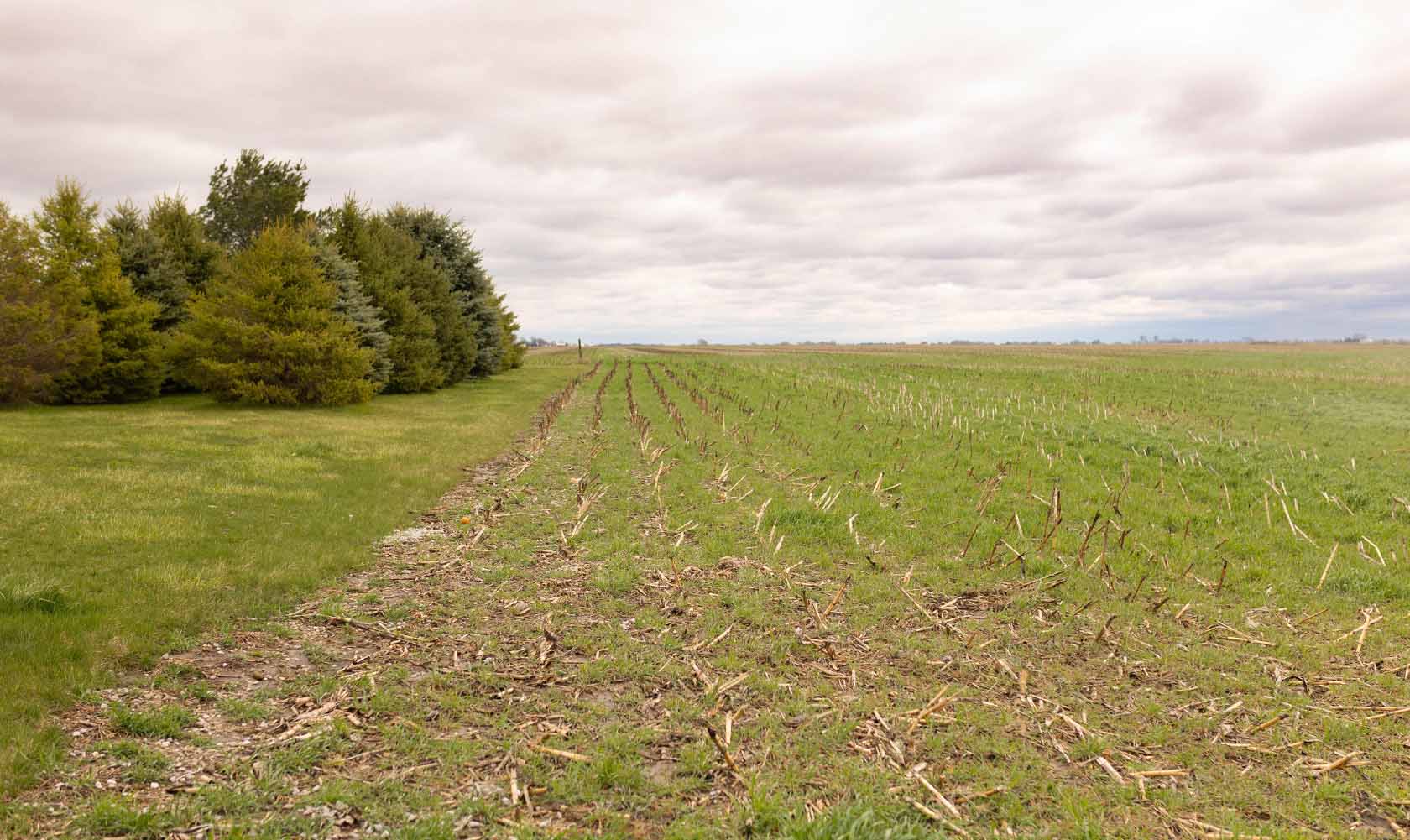
(Photo: Iowa Soybean Association / Joclyn Kuboushek)
Put your fields to the test
July 31, 2025 | Kriss Nelson
The Iowa Soybean Association (ISA) is enhancing its research program to include a wider range of topics
and a stronger emphasis on economic impact.
"Everything we are doing in our research is to find a path forward that is going to make it more profitable to be farming in the state of Iowa," says Alexander Litvin, Ph.D., ISA research agronomy lead. "Research can help farmers reduce costs and maximize profits by improving productivity and reducing input needs. By combining this with conservation, we secure the farm's future for generations."
Improved cropping systems
This two-year trial employs a systems approach, combining cover crops and management techniques to enhance soil health and crop yields, rather than relying solely on rye cover crops. Cover crops, applied by drilling or drone in the fall, are terminated before planting and then reseeded after harvest.
The cover crop mixes used should accelerate and improve the economic feasibility of integrating cover crops into corn and soybean production.
Ahead of corn, a mix of triticale, hairy vetch, camelina blend and a nitrogen inhibitor will be applied in the fall.

A mix of rye, triticale and camelina will be applied before the soybeans.
In the last two years remaining of this 4-year project, ISA is exploring an improved species blend to be implemented this fall.
"We're applying a different blend of cover crops for corn than for soy," he says. "The goal is to dial in and see which blend performs better. So far, the results for the corn blend have been extremely promising, and now we're working to optimize it further for soy."
Litvin says the improved cropping systems trial is an excellent opportunity to improve crop performance and soil health while being compensated with both free cover crop seed and payment. The program will pay farmers $750 for soybean trial areas and $1,000 for corn trial area participation.
Residue management in soybeans
This trial will investigate corn residue management using microbes and biostimulants, and the products' impact on return on investment (ROI).
In this trial, farmers will apply BW Fusion Meltdown to corn residue post-harvest in fields they will plant with soybeans the following year.

Litvin says residue breakdown may aid in improved nutrient availability, better stand counts due to improved planting efficiency, and faster fieldwork in the spring.
The study plans to investigate these potential savings from efficiency gains and weigh them against overall crop performance.
Iowa Nitrogen Initiative
The goal is to collect data from hundreds of locations of five-rate nitrogen trials to improve the Maximum Return to Nitrogen (MRTN) tool and support various crop modeling and predictive models, thereby enhancing nitrogen use efficiency and farm profitability. The only participation requirements are yield maps from previous years, a calibrated yield monitor and access to equipment that can apply nitrogen at different rates across the field.
Five different nitrogen treatments will be applied within each block according to a prescription made by the Iowa Nitrogen Initiative team.
Using past yield maps as a guide, researchers strategically position blocked trials in high- and low-yielding areas of the field. Farmers who agree to include a zero-rate treatment for their fields will receive compensation of $600.
Although yield maps can help determine trial placement in the field, farmers can also sufficiently guide the placement by indicating consistently high- and low-yielding areas year after year.
By participating in the Iowa Nitrogen Initiative, participants receive annual results with recommendations on their economic maximum return rate, guiding their practices from one year to the next.
"This trial informs farmers of their economic maximum return for nitrogen application," says Litvin. "The report details their most profitable point financially for their productivity levels."
Phosphorus and tillage
This trial will compare the applications of Monoammonium Phosphate (MAP) or Diammonium Phosphate (DAP), whichever the farmer prefers, in no-till or conventional till, with applications of RhizoSorb in strip-till.

RhizoSorb helps meet the phosphorus requirements of crops by reducing binding to soil, gradually breaking down and releasing phosphorus to plants throughout the season.
"Often, the soil will bind to the phosphorus, reducing availability to plants, and limiting potential crop growth as the season progresses," says Litvin."The idea is to significantly reduce input costs for farmers through more efficient application of phosphorus, saving money without hurting yield."
If you'd like to participate in an ISA trial this fall, contact agronomy@iasoybeans.com.
Written by Kriss Nelson.
Back